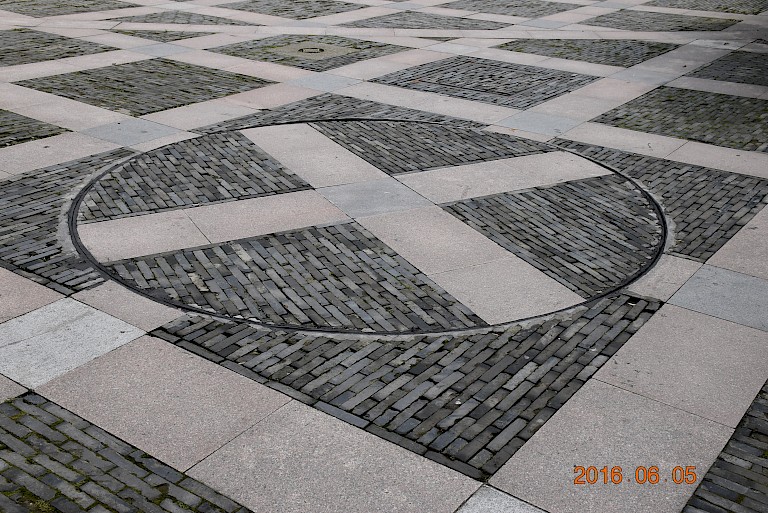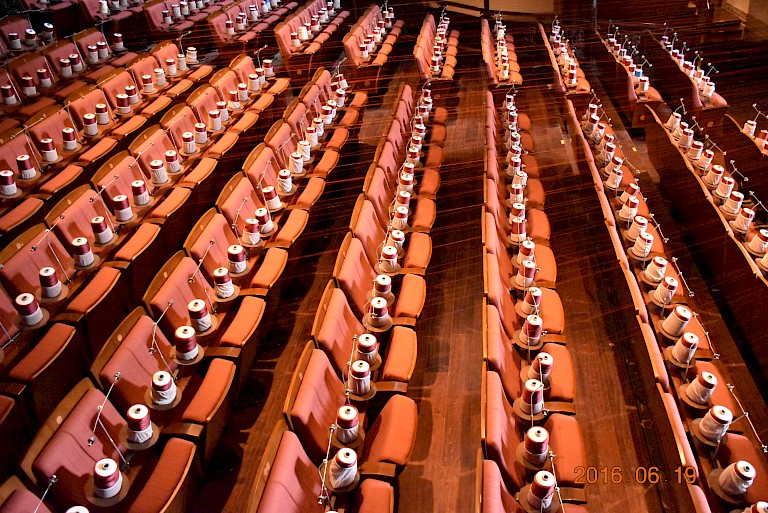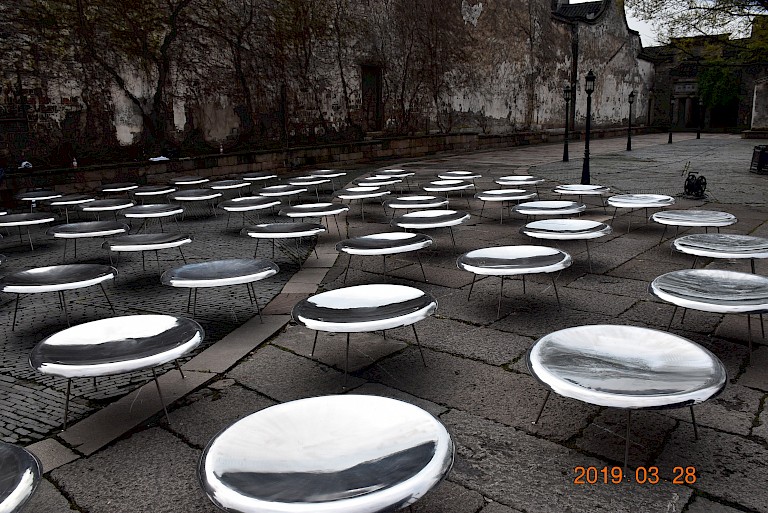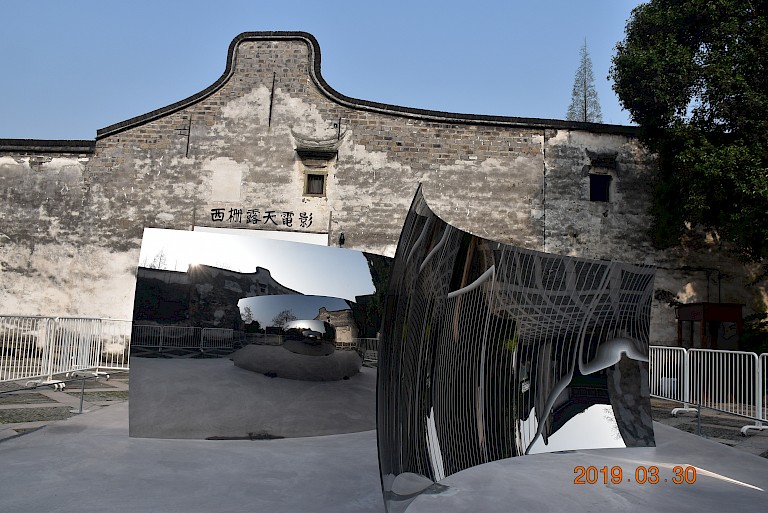



Taking the art work Anyway as an example, Wuzhen public art work project mostly adopt the way of commissioned production. Artists or designers give the design scheme and drawings, and cooperate with the local project implementation team in Wuzhen. Artists and their teams usually stay in Wuzhen for 1-2 months to carry out field investigation in the early stage, then communicate online to supervise the implementation of the Project, and carry out the final layout and finishing work before the exhibition. After the exhibition, most of the site-specific art works are collected in Wuzhen and will continue to be displayed when appropriate.
Wuzhen, as a typical water town in the south of the Yangtze River, has maintained an annual growth of about 1 million tourists since 2014. In 2017, the tourists exceeded 10 million and reached 9.15 million in 2018. These tourists come from China and even all over the world, covering all walks of life. The public art works appearing in the public space of Wuzhen are more likely to be seen by more people from different regions, cultures, classes, races and beliefs.
Compared with the first exhibition (2016), the exhibition in 2019 has an additional 50,000 visitors, with a total of more than 150,000 visitors (only the exhibition space outside Xizha scenic area is counted). During the 4-month exhibition period, 23 public lectures and workshops were held, with 54 specially invited guests participating in talks and lectures, covering topics such as curation, relationship between environment and architecture, art and countryside, operation of art museum, media ecology, video works, youth art creation, etc. All of them are open to the public free of charge, attracting not only art students, art practitioners and lovers, but also ordinary people in Wuzhen and Tongxiang city areas.
In the field of art, the youth unit was set up in the second art exhibition in 2019. The works of 12 young artists were nominated, exhibited and selected for exhibition, and three awards were selected to encourage the creation of contemporary Chinese young artists.
The two art exhibitions attracted hundreds of young students in and outside China to participate as interns or volunteers. Many of them have gained valuable internship experience and laid a foundation for their next study abroad and future work.
The six public art works selected by the author are all site-specific works, which are active or passive related to the surrounding environment and local people in Wuzhen. The two stainless steel mirror works reflect the surrounding scenery and the active people in physical way. Hamilton and Tolaas, with their unique female delicacy, chose to dig into the local people of Wuzhen for stories and emotional memories, and created public art works with Wuzhen's unique memory. Kormeling and Julian choose the way of game and animation to interact with Wuzhen people and visitors. The animated characters who change scenes and run alone at night seem to express the artist's feelings about Wuzhen and arouse people's thinking.
The excellent works and artist stories of each art exhibition are delightedly talked about by local people in Wuzhen.
Wuzhen is the place of the main case studied in the author's doctoral dissertation, and the author once participated in the preparatory work of two Wuzhen Contemporary Art I Exhibitions in 2016 and 2019. During eight months of exhibition and withdrawal, he participated in the organization and preparation of nearly 60 public lectures and workshops held in Wuzhen with the participation of artists, art researchers, curators and art critics. During the two art exhibitions, the author not only communicated with the artists and their teams, but also had a lot of contact with the local people, thus obtained first-hand information rarely seen in the media and public reports.
Secondly, the author's research field involves rural art practice, site-specific art and rural documentary. On the premise of understanding the background of rural China, the author takes the art project appeared in Wuzhen, which is located in the most economically developed area of Jiangnan, as the research object, which is very representative.
Finally, the author has witnessed the changes of Wuzhen and Wuzhen people through the four years of fieldwork from 2016 to 2019. Their changes are the epitome of the great changes of urbanization in the economically developed rural areas in the south of the Yangtze River in recent 10 years. In the four years, people's attitudes towards art exhibitions, contemporary art and public art projects have changed, that just reflects people's changes in spirit and ideology, which is the most noteworthy.
The author regards Wuzhen as a special research project. For Wuzhen's art projects, the author is more concerned about its future development, and will maintain a certain distance of continuous attention, and hopes to obtain continuous financial support to continue this special research.
All copyright belongs to Shanghai Academy of Fine Arts, Shanghai University.



